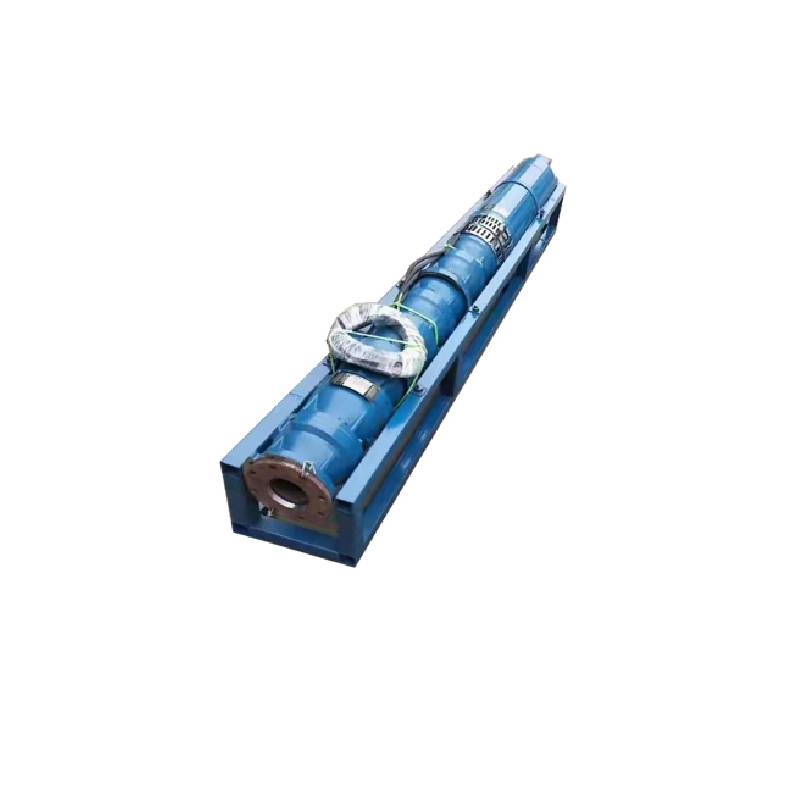Nov . 09, 2024 01:40 Back to list
Troubleshooting Issues with Your Submersible Sump Pump Not Functioning Properly
Troubleshooting Your Submersible Sump Pump What to Do When It's Not Working
Submersible sump pumps are an essential component in many homes, especially in areas prone to flooding or excessive water accumulation. They work diligently to keep your basement or crawlspace dry by pumping out water that may accumulate in sump pits. However, like any mechanical device, submersible sump pumps can encounter problems over time. If you find that your submersible sump pump is not working, don’t panic; there are several steps you can take to troubleshoot and potentially resolve the issue.
1. Check the Power Supply
The first thing to consider when your sump pump stops working is the power supply. A simple power outage or tripped circuit breaker could be the culprit. Ensure that the sump pump is plugged into an outlet and that the outlet is functional. You can test the outlet by plugging in another device. If the outlet is dead, check your circuit breaker and reset it if necessary. Additionally, ensure the power cord is free from damage.
2. Inspect the Float Switch
The float switch is a crucial part of the sump pump system that activates the pump when water levels rise. If the float switch is stuck, your pump won’t operate. Lift the float manually to see if the pump starts; this indicates it might be obstructed. Clear any debris around the float mechanism or ensure that it is not tangled with the pump’s electrical cord. If the float is still unresponsive, it may be time for a replacement.
3. Examine the Discharge Pipe
A clogged discharge pipe can prevent your sump pump from functioning properly. Inspect the discharge pipe for obstructions or kinks that might be preventing water from flowing out. Remove any visible blockages, such as mud, roots, or debris. It’s also wise to check the check valve, which ensures that water doesn’t flow back into the sump pit after being pumped out. If this valve is malfunctioning, it could lead to pump inefficiency.
4. Assess the Pump Itself
submersible sump pump not working

If power and the float switch appear to be functioning correctly, it’s time to turn your attention to the pump itself. Listen for any unusual noises when the pump is operating. A grinding or rattling sound can indicate mechanical failure. Inspect the pump for signs of wear or corrosion. If water has entered the motor housing, it could be damaged and may require professional servicing or replacement.
Sometimes, a sump pump may shut down due to overheating. This could be a result of prolonged operation, particularly during heavy rainfall. Ensure that the pump is not running continuously, and allow it to cool down before checking other components. If overheating becomes a recurring issue, you may need to consider upgrading to a more robust model or assessing the installation for any inaccuracies that might be leading to constant operation.
6. Routine Maintenance
Preventative maintenance is key to ensuring your sump pump operates efficiently. Regularly clean the sump pit to remove sediments and debris that can interfere with the pump’s operation. Additionally, it's advisable to test your pump regularly, especially before heavy rain seasons. Pour water into the sump pit and observe whether the pump activates and expels the water effectively.
7. Consult a Professional
If you’ve tried the above troubleshooting steps and your sump pump is still not working, it may be time to consult a professional. A certified technician can provide a thorough assessment of the system, identify underlying issues you may have missed, and recommend a course of action, whether it be repairs or replacing the pump entirely.
Conclusion
A malfunctioning submersible sump pump can lead to significant water issues and potential damage to your home’s foundation. By following these troubleshooting steps, you can determine the cause of the problem and take appropriate action. Regular maintenance can help prevent pump failures and prolong the lifespan of your system. Remember, when in doubt, don’t hesitate to seek professional help to ensure everything is functioning optimally. Keeping your sump pump in good working condition is vital for a dry and safe home.
-
Submersible Water Pump: The Efficient 'Power Pioneer' of the Underwater World
NewsJul.01,2025
-
Submersible Pond Pump: The Hidden Guardian of Water Landscape Ecology
NewsJul.01,2025
-
Stainless Well Pump: A Reliable and Durable Pumping Main Force
NewsJul.01,2025
-
Stainless Steel Submersible Pump: An Efficient and Versatile Tool for Underwater Operations
NewsJul.01,2025
-
Deep Well Submersible Pump: An Efficient 'Sucker' of Groundwater Sources
NewsJul.01,2025
-
Deep Water Well Pump: An Efficient 'Sucker' of Groundwater Sources
NewsJul.01,2025
-
 Submersible Water Pump: The Efficient 'Power Pioneer' of the Underwater WorldIn the field of hydraulic equipment, the Submersible Water Pump has become the core equipment for underwater operations and water resource transportation due to its unique design and excellent performance.Detail
Submersible Water Pump: The Efficient 'Power Pioneer' of the Underwater WorldIn the field of hydraulic equipment, the Submersible Water Pump has become the core equipment for underwater operations and water resource transportation due to its unique design and excellent performance.Detail -
 Submersible Pond Pump: The Hidden Guardian of Water Landscape EcologyIn courtyard landscapes, ecological ponds, and even small-scale water conservancy projects, there is a silent yet indispensable equipment - the Submersible Pond Pump.Detail
Submersible Pond Pump: The Hidden Guardian of Water Landscape EcologyIn courtyard landscapes, ecological ponds, and even small-scale water conservancy projects, there is a silent yet indispensable equipment - the Submersible Pond Pump.Detail -
 Stainless Well Pump: A Reliable and Durable Pumping Main ForceIn the field of water resource transportation, Stainless Well Pump has become the core equipment for various pumping scenarios with its excellent performance and reliable quality.Detail
Stainless Well Pump: A Reliable and Durable Pumping Main ForceIn the field of water resource transportation, Stainless Well Pump has become the core equipment for various pumping scenarios with its excellent performance and reliable quality.Detail
